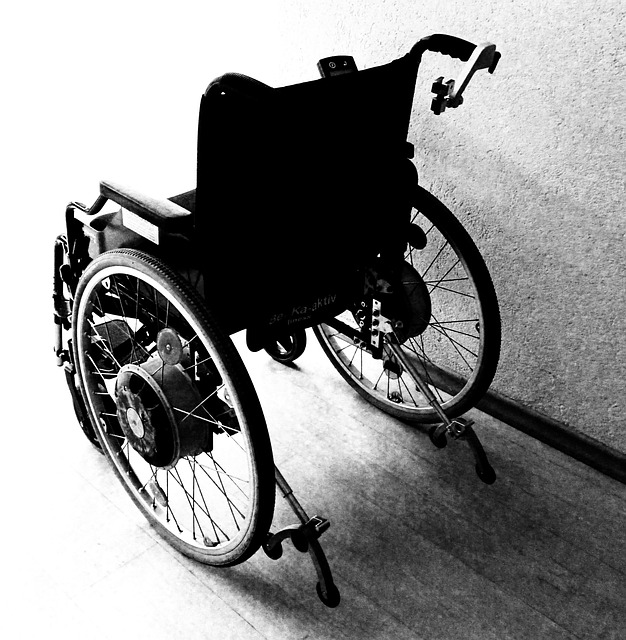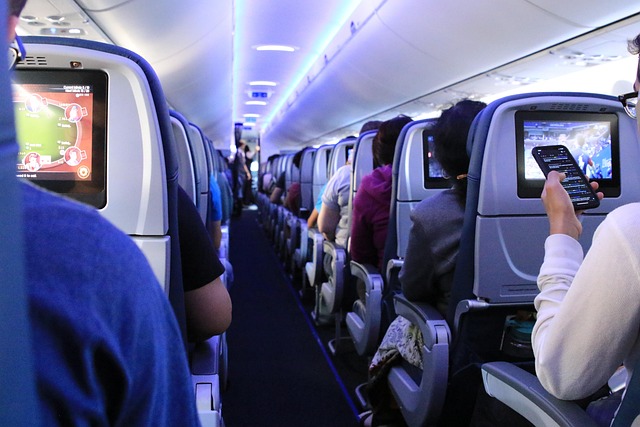Transforming Senior Mobility: Eugene Oregon’s Accessible Transport Future

Eugene, Oregon, prioritizes senior transport accessibility with diverse options including centers, s…….
We are At Your Service
In the vibrant city of Eugene, Oregon, ensuring accessible transportation options for its aging population is not just a service but a cornerstone of an inclusive and thriving community. This comprehensive article aims to explore the various facets of accessible transportation designed for seniors, delving into how it is reshaping lives in Eugene and serving as a model for other urban centers worldwide. By examining its definition, global impact, economic implications, technological innovations, policy frameworks, challenges, case studies, and future prospects, we will uncover the multifaceted role this initiative plays in improving senior citizenship.
Accessible transportation, tailored for seniors, is a vital component of urban mobility that goes beyond physical vehicles. It encompasses a network of services, infrastructure, and technologies designed to cater to the unique needs of older adults, ensuring they can move around with ease, safety, and independence. In Eugene, Oregon, this concept has evolved to include various modes of transport, from specialized buses and taxis to innovative mobility apps and assistive devices.
The primary goal is to remove barriers that prevent seniors from participating fully in community life due to age-related physical limitations or reduced mobility. By providing accessible transportation, Eugene strives to:
The concept of accessible transportation for seniors has gained global recognition and momentum in recent years. Eugene’s initiatives are part of a larger movement to create more inclusive cities worldwide, reflecting several key trends:
Aging Populations: Many countries, including the United States, are experiencing rapid aging of their populations, putting a spotlight on senior citizens’ transportation needs. According to the World Health Organization (WHO), by 2050, persons aged 60 and over will account for 22% of the global population, underscoring the urgency of accessible transport solutions.
Urbanization: With increasing urbanization comes the challenge of ensuring that rapidly growing cities remain livable for all residents, including seniors. Cities like Eugene are at the forefront of addressing this issue through innovative transportation strategies.
Technology Integration: The adoption of technology in transportation systems is a global trend, with many cities implementing digital solutions to improve accessibility. Apps for ride-sharing, real-time transit information, and mobility assistance tools are becoming essential components of accessible transport networks.
Policy and Advocacy: Governments worldwide are recognizing the need for policy interventions to promote accessible transportation. This includes subsidies, incentives, and regulatory frameworks that encourage private sector participation and ensure quality services for seniors.
The economic implications of accessible transportation for seniors extend far beyond the direct costs of providing such services. It is a significant segment of the mobility market with considerable growth potential, as evidenced by several factors:
Market Size: According to a report by Grand View Research, the global senior transportation market size was valued at USD 172.8 billion in 2020 and is expected to expand at a compound annual growth rate (CAGR) of 5.4% from 2021 to 2028. This indicates a substantial market opportunity for businesses and cities looking to invest in accessible transport solutions.
Investment Opportunities: Eugene’s focus on accessible transportation has attracted investments from both public and private sectors. Local authorities have allocated funds for infrastructure development, while private companies have shown interest in providing specialized services, creating jobs and stimulating the local economy.
Cost Savings: Accessible transportation can lead to long-term cost savings for society by reducing hospital admissions and emergency room visits related to mobility issues. A study by the American Public Transportation Association (APTA) found that public transit use among older adults is associated with lower healthcare expenditures, highlighting the economic benefits of accessible transport systems.
Tourism Boost: By improving transportation options for seniors, Eugene can enhance its appeal as a tourist destination. Accessible tourism is a growing sector, and catering to this demographic can attract visitors who may contribute to the local economy.
Technology plays a pivotal role in shaping accessible transportation for seniors, revolutionizing how they travel and interact with transport systems. Some notable advancements include:
Autonomous Vehicles: Self-driving cars and buses are being explored as potential solutions for senior mobility. Companies like Waymo and Argo AI are testing autonomous vehicles that can navigate complex urban environments, offering a safe and convenient transportation option for the elderly.
Mobility Apps: Smartphone applications are transforming the way seniors access transport services. Apps like Uber, Lyft, and local ride-sharing platforms provide on-demand transportation options, allowing users to book trips easily. Additionally, apps focused on senior mobility, such as GoJetto (a UK-based service) and Paratransit (an American solution), offer tailored services for older adults with specific needs.
Assistive Devices: Innovations in assistive technology have improved the independence of many seniors. Power chairs, walking aids, and smart home devices enable individuals to move around more freely, enhancing their overall mobility experience.
Digital Wayfinding: Advanced digital mapping and wayfinding tools assist seniors in navigating complex transportation networks. These technologies provide real-time information on bus schedules, route options, and accessibility features, making it easier for users to plan trips.
Effective accessible transportation systems are underpinned by robust policy frameworks that guide their development and operation. Key policies and regulations in Eugene, Oregon, include:
Oregon Rehabilitation Act: This state law prohibits discrimination against individuals with disabilities, including those related to transportation. It ensures that public accommodations, including transport services, are accessible to all.
Americans with Disabilities Act (ADA): The ADA is a federal legislation that mandates equal access to public services for people with disabilities. It sets accessibility standards for vehicles, facilities, and communication systems, influencing the design and operation of transportation networks.
Local Transportation Plans: Eugene’s city planners have developed comprehensive transportation plans that prioritize inclusive mobility. These plans include dedicated funding for accessible transport initiatives, ensuring resources are allocated to meet the needs of all residents.
Partnerships with Transit Agencies: Local authorities collaborate with transit operators like the Lane Regional Transportation (LRT) to enhance accessibility. This includes fleet upgrades, improved station access, and staff training to cater to the unique requirements of senior passengers.
Despite significant progress, accessible transportation for seniors faces several challenges that require strategic solutions. These include:
Cost and Funding: Implementing and maintaining accessible transport systems can be costly. Securing sustainable funding sources is crucial to ensure long-term viability. Public-private partnerships and innovative financing models can help address this challenge.
Infrastructure Gap: Upgrading existing infrastructure to accommodate accessibility features may be challenging, especially in older urban areas. Comprehensive planning and phased implementation strategies can help bridge this gap.
Technology Adoption: While technology offers immense potential, ensuring its widespread adoption among seniors can be difficult. Providing training, offering accessible user interfaces, and addressing digital literacy gaps are essential steps to encourage technology use.
Critical Evaluation of Services: Some critics argue that existing accessible transport services may not fully meet the diverse needs of seniors. Regular service evaluations and community feedback mechanisms can help refine offerings and ensure they remain responsive to users’ requirements.
Eugene, Oregon, has seen several successful initiatives that demonstrate the power of accessible transportation in enhancing senior citizens’ lives. Here are a couple of notable case studies:
Case Study 1: Senior Ride Program
The Senior Ride program is a community-based initiative operated by local non-profit organizations in partnership with transit agencies. It provides door-to-door transportation for seniors who cannot use traditional public transit due to mobility issues or other challenges. The program offers flexible schedules, accessible vehicles, and friendly drivers, ensuring seniors can access medical appointments, social events, and essential services. This service has been instrumental in reducing isolation among older adults and improving their overall well-being.
Case Study 2: Smart Transit App Integration
Eugene’s local transit authority, LRT, introduced a user-friendly mobile app that provides real-time information on bus schedules, routes, and accessibility features. The app also allows users to plan trips, pay fares digitally, and receive alerts for service disruptions. This technology has empowered seniors by giving them more control over their travel plans, improving trip planning, and enhancing overall satisfaction with public transportation.
The future of accessible transportation for seniors in Eugene and beyond is filled with promising opportunities and emerging trends:
Autonomous Mobility Solutions: As autonomous vehicle technology advances, we can expect to see more self-driving buses and shuttles providing door-to-door transport for seniors. This will reduce the need for personal vehicles and offer a convenient, safe travel option.
Personalized Transportation Services: There is a growing trend towards personalized mobility services tailored to individual needs. This could include on-demand transportation, dedicated senior shuttle services, or even robotic assistive devices for those with severe mobility impairments.
Digital Integration: The integration of artificial intelligence (AI) and machine learning will enhance digital wayfinding tools, making them more accurate and user-friendly. These technologies can also optimize transport networks, improving efficiency and reducing wait times.
Community Engagement: Future initiatives will likely emphasize community engagement and participation, ensuring that accessible transportation solutions are designed with input from seniors themselves. This collaborative approach will result in more relevant and effective services.
Intermodal Connectivity: Improving connections between different modes of transport will be crucial. Seamless transfers between public transit, ride-sharing services, and shared mobility options will enable seniors to travel longer distances and access a broader range of activities.
In the vibrant city of Eugene, Oregon, accessible transportation for seniors is not just a service but a testament to the community’s commitment to inclusivity and social equity. By understanding its definition, global impact, economic significance, technological advancements, policy frameworks, and challenges, we can appreciate the multifaceted role it plays in enhancing senior citizens’ lives.
The case studies presented illustrate how creative solutions and community collaboration can overcome accessibility barriers, leading to improved mobility and quality of life for seniors. As technology continues to evolve and global trends shape urban mobility, Eugene’s efforts will undoubtedly inspire other cities to embrace similar initiatives.
The future of accessible transportation holds immense potential, with emerging trends promising even more inclusive and efficient mobility solutions. By investing in these systems, communities can foster thriving, connected, and vibrant neighborhoods for all their residents, ensuring that age is not a barrier to participation and enjoyment of urban life.
Q: How does accessible transportation benefit the broader community?
A: Accessible transportation improves mobility for all residents, including seniors, people with disabilities, and individuals with temporary injuries or conditions. It promotes social inclusion, enhances access to services, and contributes to a more vibrant and connected community overall.
Q: What role do private companies play in providing accessible transport solutions?
A: Private companies contribute significantly by offering specialized services, investing in technology, and creating jobs. They often fill gaps in transportation networks and provide innovative solutions, ensuring that accessibility needs are met efficiently.
Q: How can I access accessible transportation options in Eugene?
A: You can contact local transit agencies like LRT or non-profit organizations running senior transport programs for information on available services. Many offer online booking systems, and some apps provide real-time information on accessible transport options.
Q: Are there any financial assistance programs for seniors seeking accessible transportation?
A: Yes, various state and local programs offer subsidies or discounts for low-income seniors. These can help offset the costs of accessible transport services, making them more affordable for those in need.
Q: How does technology improve accessibility for senior citizens?
A: Technology plays a pivotal role by offering user-friendly apps for trip planning, providing real-time information on transportation options, and enabling remote access to mobility assistance. Assistive devices and smart home technologies also enhance independence and mobility for seniors.

Eugene, Oregon, prioritizes senior transport accessibility with diverse options including centers, s…….

Senior citizens in Eugene, Oregon, face mobility challenges due to an aging population and inadequat…….

Wheelchair accessible Eugene Oregon boasts an inclusive public transit system with dedicated low-flo…….

Eugene, Oregon prioritizes accessible transportation for seniors through dedicated services like Pea…….

Paratransit services in Eugene, Oregon, offer door-to-door accessibility for individuals with disabi…….

Senior transport in Eugene Oregon faces unique challenges due to terrain and limited dedicated servi…….

Eugene, Oregon, is enhancing senior transport and accessibility with door-to-door shuttles, paratran…….

Eugene, Oregon, demonstrates progress in wheelchair accessibility with integrated public spaces and…….

Wheelchair accessible vehicles and specialized transport services in Eugene, Oregon, are vital for p…….

Wheelchair accessible Eugene Oregon stands out for its beautiful landscapes, inclusive community, an…….